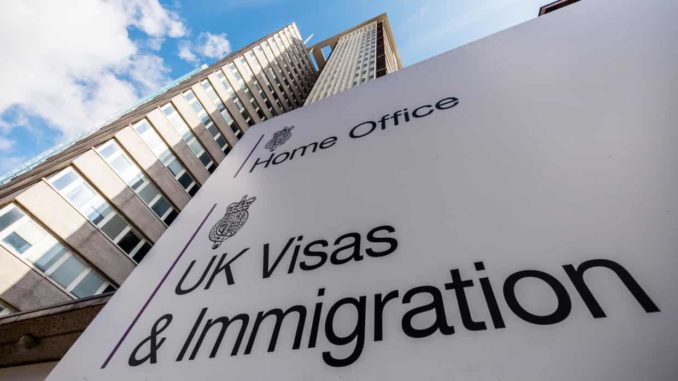
The use of visa restrictions to control global migration is “counterproductive and ineffective”, pushing people who want to stay within the law towards illegal channels, research has suggested.
The study by academics from University College London (UCL), University of Birmingham, and Royal Holloway University of London, found that increased visa restrictions on migrants creates a greater need for enforcement. Researchers suggested governments should consider the wider impacts of controls, and take into account the aspirations of the individual in order to stem illegal immigration.
Only a small minority of migrants will consider entering a country illegally, said study co-author, Dr Cassilde Schwartz of the University of London. “It’s extremely difficult to measure unauthorised migration … as it is often clandestine and unobservable,” she said. “Using experimental survey techniques, we found that fewer than 20% of aspiring migrants are willing to consider illegal channels. Of course, when visa policies become too restrictive, they are left with few options.”
In the year to March 2017, the UK Home Office received 2.98m visa applications; 400,000 were refused and of the 2.55m granted – 299,000 were for study, 47,000 for family/dependants, 164,000 related to work and 1.96m were visitors.
Published in the Proceedings of the National Academy of Sciences, the study looked at why and how people migrate, based on varying levels of restriction. Researchers focused on four categories controlled by the visa immigration system: families, students, low and high skilled applicants.
Their findings suggest that restrictions on high skilled visa applications and students had little impact on controlling numbers.
In contrast, restrictions imposed on the entry of families (in particular around unification) and the low skilled, which appear to reduce migrant flow, only served to divert a significant number of “aspirational” applicants towards illegal entry.
“The largest reorientation towards unauthorised channels happens when the family route is closed … When restricting immigration policy, governments need to consider that they are also reducing aspiring migrants’ already limited options for legal migration,” said UCL’s Miranda Simon, lead author.
Where minimal achievable visa restrictions could easily be met, researchers found that 44% of aspiring applicants moved through legal channels. Adding further restrictions such as work permits and sponsorship caused a reduction in those seeking legal methods of entry. The same test applied to families and low-skilled applicants, and found that immigration reduced by 32% and 21% respectively, but increased unauthorised immigration by 24% and 14%.
The report found that 80% of those entering illegally would need to be apprehended in order to offset the effect of legal restrictions, rendering this “solution” inefficient whilst placing significant strain on resources.
Globally there are an estimated 258 million migrants (people living in a country other than that of their birth), or 3.4% of the world’s population. Between 2000 and 2015, migration made up 42% of population growth in north America. In Africa, Asia, Latin America and the Caribbean, the net impact was negative. In Europe, however, the population would have been in decline had it not been for migration, according to UN statistics.
In 2017 an estimated 282,000 more people came to the UK than left, with annual immigration at an average of 630,000 and emigration at 350,000, according to the UK’s Office for National Statistics (ONS).
ONS statistics are used by the UK government to decide policy, but true numbers are hard to ascertain. Human trafficking and smuggling, and the use of false documents, are facilitated by organised criminal gangs who prey on migrants fleeing conflict, severe economic pressures or those who fail the visa system.
Illegal migrants may live “under the radar” rather than seeking asylum, coming to the attention of authorities only through hospitals, police or homeless or other charity referral, at which point they become an official statistic.
Long-term issues such as migrant camps further distort assessments made by authorities. A survey conducted earlier this year by Help Refugees found that approximately 6,700 people were in migrant camps at Calais and Dunkirk, most of whom fell into the family, low-skilled or aspirational category and were bypassing visa processes. Camps see a constant flow of migrants trying to reach the UK. With sources reporting to the Guardian that the smuggling gangs operate with a near 100% success rate, the number of migrants who are in the UK unlawfully is likely to be significantly higher than ONS figures suggest.
In the year ending 2017, Home Office received 27,316 applications for asylum, down 17% from 2016. The top 5 nationalities applying for asylum in the UK were Iran (38%), Afghanistan (35%), Pakistan (14%), Iraq (13%) and Bangladesh (5%). In 2016 the UK was fifth in the EU league table for asylum applications, Germany was top with 722,265.
“Our research clearly demonstrates that, while restrictions on immigration do decrease legal migration, this has unintentionally led to an increase in illegal immigration flows which results in a costly and unsustainable need for greater border enforcement,” said co-author David Hudson, of Birmingham university.
The UCL led team examined a single migration route from Jamaica whose citizens are more likely to migrate due to economic pressures, suggesting the results could be applied to other countries with the same economic situation.
• This article was amended on 21 August 2018 to correct the names of the universities involved in the study.
END

Be the first to comment